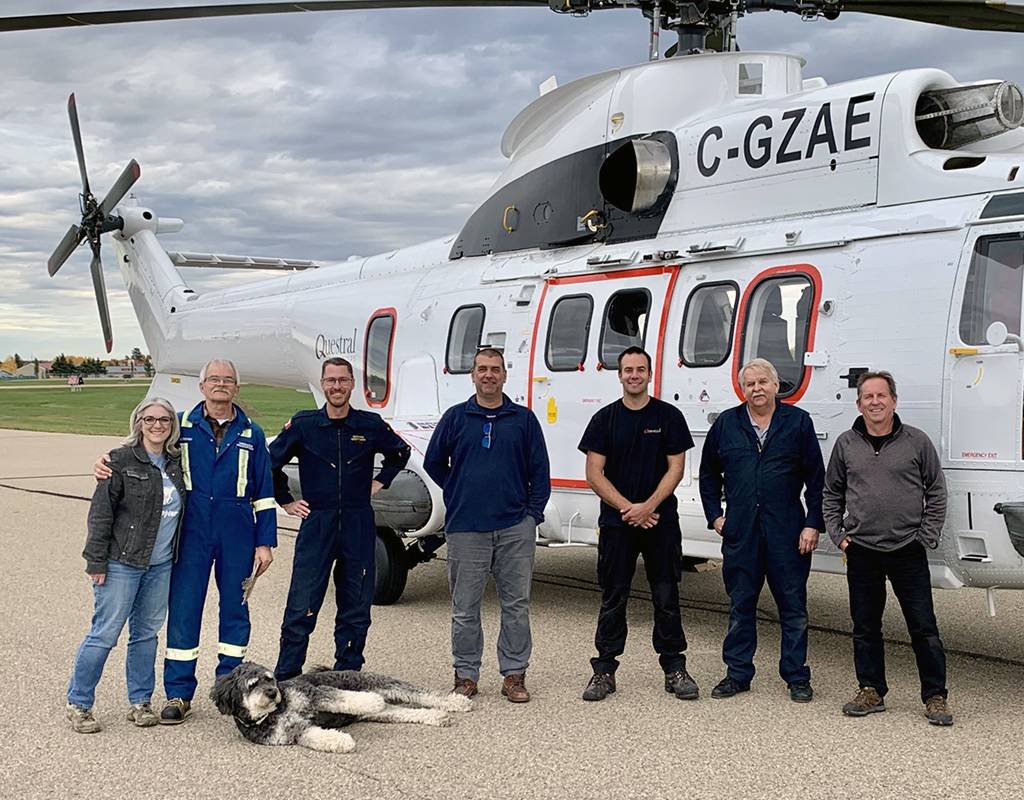
About two years ago, Questral Helicopters of Edson, Alberta, decided it was time to introduce the Airbus AS332 L2 Super Puma to Canada.
While earlier models – specifically the L and L1 – were already in operation in the country, Transport Canada had yet to certify the newer L2. But when Questral owner and president André Brunet acquired two airframes at the end of 2019, certification became a priority.
“We wanted to operate them in the utility market,” Brunet told Vertical. “The Puma itself is a heavy helicopter used in specific roles. Our idea was to repurpose it, following the drop in the offshore and oil market when Pumas got parked. They can lift 11,023 pounds [5,000 kilograms] and we want to bring them into the utility market, which is currently served by intermediate and medium helicopters.”
The L2 Super Puma is a highly automated aircraft offering more modern features than its predecessors, including an electronic flight instrument system (EFIS). It is also equipped with the Spheriflex main and tail rotor system, which is easier to maintain and requires no lubrication when compared to the legacy models’ articulated rotor system. The L2’s upgraded Safran (Turbomeca) Makila 1A2 engines deliver increased Category A performance, with a 20,500-lb. (9,300-kg) maximum internal takeoff weight compared to the L1’s 18,959 lb. (8,600 kg).
Questral’s two aircraft were delivered to Canada in the spring of 2020 and certification conversations began with Airbus (the manufacturer) and Transport Canada (the regulator). Brunet began to assemble the right in-house team to get the job done, bringing everyone on board by early 2021.
Along with Brunet himself, that included team lead Dan Merritt; L2 and Makila 1A2 engineer Dan Woodward; avionics lead Stephen Laidler; and Gerhard Geertsema, chief pilot for Questral’s Super Puma program.
Questral’s maintenance department, working under director of maintenance Kim Hornsby, removed the two aircraft from storage. Complete return-to-service inspections were performed, addressing many overdue components. One aircraft was destined for the type certification program, while the other was prepared for eventual entry into service. To make this second aircraft lighter, the team removed some components that had been installed for its offshore role, including sound proofing, life rafts and offshore emergency equipment. The sixth fuel tank was also removed to accommodate a five-ton cargo hook.

Meanwhile, Airbus and Transport Canada exchanged information in anticipation of Canadian test flights.
“Flight testing was scheduled for summer 2021, but we were delayed due to Covid and a number of reasons,” said Brunet. “Finally, in October, we went to Winnipeg because Covid rates were spiking in Alberta. We took the aircraft to St. Andrews Airport [just north of Winnipeg], where we met up with Airbus and Transport Canada.”
Following about eight hours of successful flight testing, Transport Canada granted its approval and the L2 type certificate was issued on Dec. 22, 2021.
More for Less
Brunet believes the L2 Super Puma and its capabilities have a lot to offer Canadian aviation, filling utility roles in firefighting, search-and-rescue, natural disaster response, cargo, mining and more. It can accommodate up to 19 passengers.
“The challenge will be to demonstrate that it does have the ability to do more for less,” he said. “It’s a bit of a ‘build it and they will come’ approach. Heavies weren’t used a lot in Canada because they weren’t available.
“For firefighting, I see the L2s predominantly replacing medium helicopters. Why use an aircraft that lifts between 300 and 500 gallons (1,135 to 1,892 litres) of water, when you can use an aircraft that takes 800 to 1,000? It’s two to three times the volume without two to three times the cost.”
He said the U.S. seems to be ahead of Canada in recognizing the usefulness of these machines.
“Down there, the U.S. military released a bunch of surplus Black Hawks. Here, we can’t use ex-military aircraft, and they seem to be ahead of us in that regard. The Pumas can cruise at 130 to 140 knots. If we had an aircraft in central Alberta, for example, we could be anywhere in the province within three hours.”
Currently, Questral is fine tuning its standard operating procedures, with the aircraft expected to be operational by April. Although certified for single pilot visual flight rules operations, Geertsema said Questral will operate the L2 Super Puma with two crewmembers.



